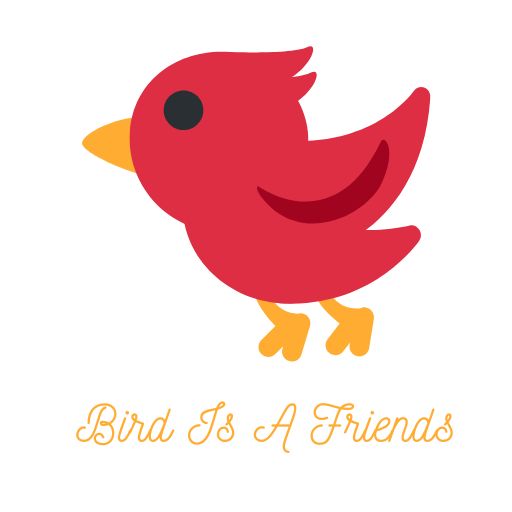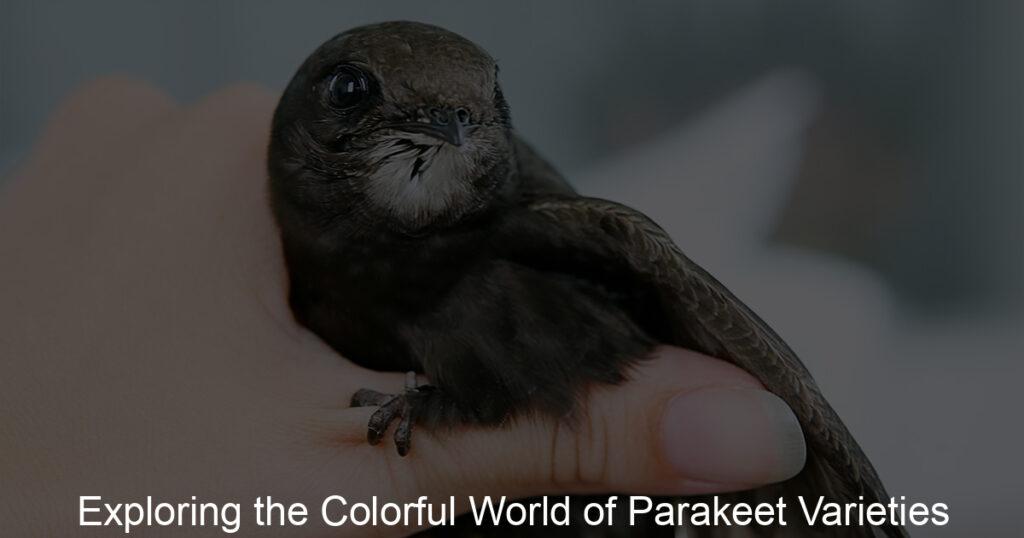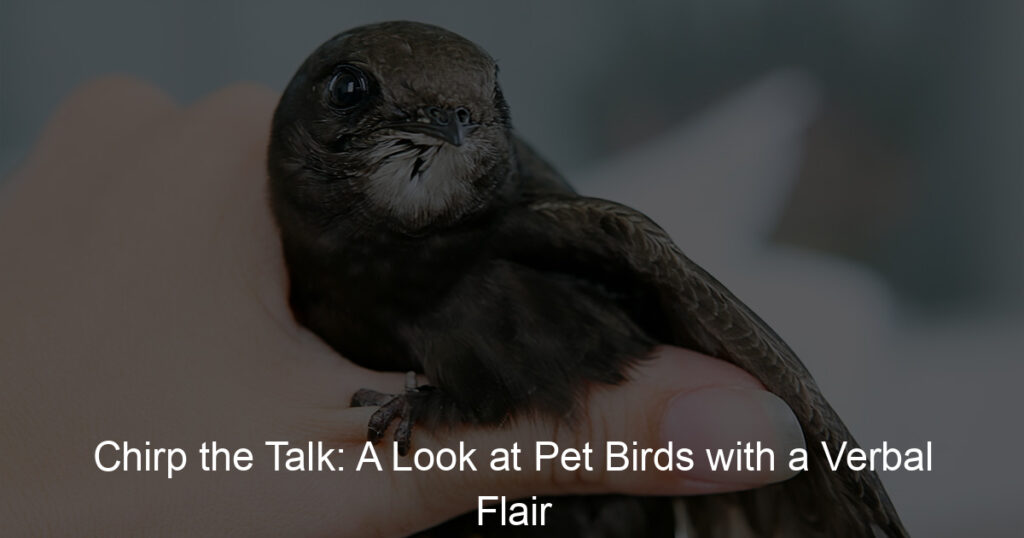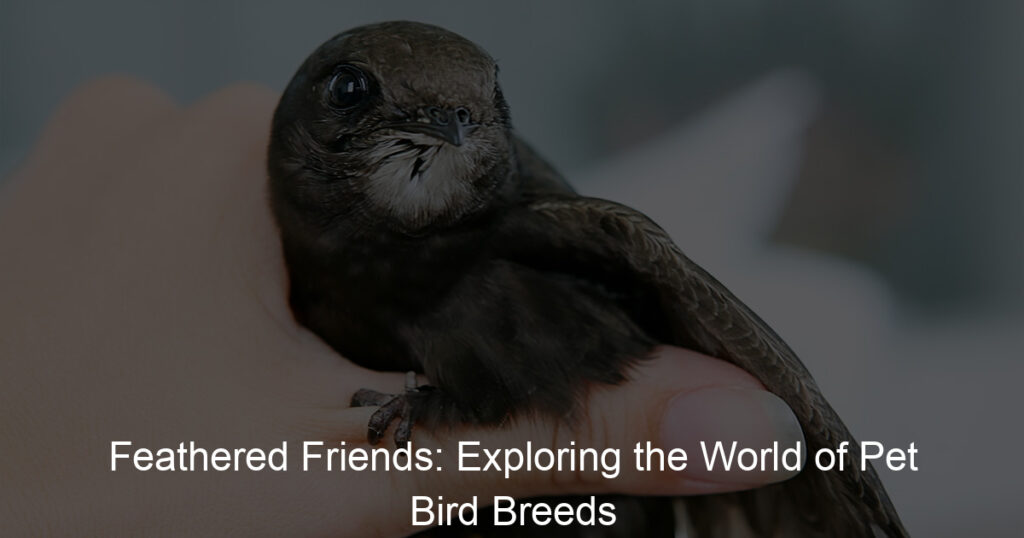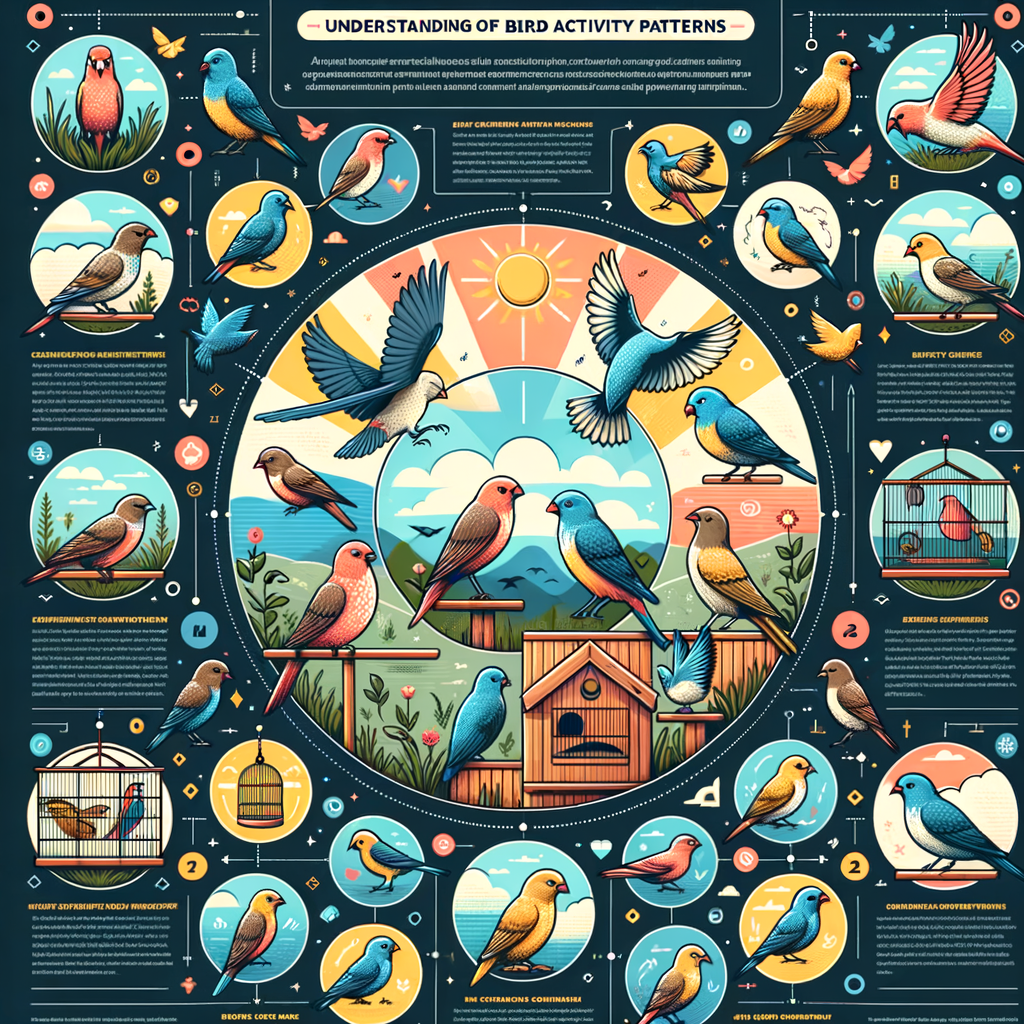
Introduction to Understanding Pet Bird Behavior
When it comes to pet birds, their behavior can sometimes seem like a mystery. However, understanding your feathered friend’s actions is not only fascinating but also crucial for their well-being. In this article, we will delve into the importance of understanding your bird’s behavior and dispel some common misconceptions about bird behavior.
-
Why Understanding Your Bird’s Actions is Important
Understanding your bird’s behavior is essential for several reasons. Firstly, it can help you ensure your bird is happy and healthy. Birds often use their behavior to communicate their feelings and needs. For example, a bird that is constantly preening or plucking its feathers might be stressed or bored. By understanding these behaviors, you can take steps to improve your bird’s environment and overall well-being.
Secondly, understanding your bird’s behavior can strengthen your bond with them. Birds are intelligent creatures that appreciate interaction and stimulation. By recognizing and responding to their behaviors, you show your bird that you understand and care for them, which can lead to a stronger, more fulfilling relationship.
-
Common Misconceptions About Bird Behavior
There are many misconceptions about bird behavior. One common misconception is that birds are simple creatures with limited emotions. However, studies have shown that birds are capable of complex emotions and can express happiness, fear, and even boredom.
Another common misconception is that all bird behaviors are instinctual. While it’s true that birds have some instinctual behaviors, they also learn many behaviors from their environment. For example, a bird might learn to mimic certain sounds or actions from their human companions or other birds in their environment.
Lastly, many people believe that a bird’s behavior can’t change. However, just like humans, birds can change their behavior in response to changes in their environment or health. Therefore, it’s important to monitor your bird’s behavior and seek veterinary advice if you notice any sudden changes.
Insights on Bird Behavior Patterns
Understanding bird behavior patterns is a fascinating journey that can help bird owners and enthusiasts to connect more deeply with these beautiful creatures. In this section, we will delve into recognizing bird behavior patterns, focusing on two key areas: bird vocalization and body language.
Recognizing Bird Behavior Patterns
Recognizing bird behavior patterns involves keen observation and understanding of their vocalization and body language. Let’s explore these two aspects in detail.
- Understanding bird vocalization
Bird vocalization is a primary way birds communicate. Each species has a unique set of calls and songs that convey different messages. For instance, a bird’s call can signify a warning, a mating call, or a simple communication between a parent and its offspring.
Listening to your bird’s vocalization can provide valuable insights into its emotional state. A happy, content bird may sing melodiously, while a distressed or frightened bird may emit sharp, loud calls. Understanding these vocal cues can help you respond to your bird’s needs more effectively.
- Interpreting bird body language
Just like humans, birds also use body language to express their feelings and intentions. By observing their posture, feather arrangement, and movements, you can gain a deeper understanding of their behavior.
For example, a relaxed bird may have smooth feathers and a calm posture, while an agitated bird may puff up its feathers and bob its head. A bird that is ready to mate might perform unique dances or display its feathers in a particular way. Recognizing these body language cues can help you better understand your bird’s behavior and respond appropriately.
In conclusion, recognizing bird behavior patterns is a rewarding endeavor that can enhance your relationship with your feathered friends. By understanding bird vocalization and interpreting body language, you can communicate more effectively with your bird and cater to its needs more efficiently.
Common Bird Behavior Patterns
Understanding bird behavior patterns is key to forming a strong bond with your pet bird. Let’s delve into some of the most common bird behaviors, including feeding, sleeping, and mating behaviors.
-
Feeding Behaviors
Feeding is a vital part of a bird’s daily routine. Birds typically eat in the morning and evening. Some birds, like parrots, use their feet to hold food while they eat. They may also scatter food around their cage, which is a natural foraging behavior. It’s important to provide a variety of foods to mimic their natural diet and keep them healthy.
Common Bird Foods Examples Seeds Sunflower seeds, millet Fruits Apples, bananas, grapes Veggies Carrots, broccoli, peas -
Sleeping Patterns
Birds have unique sleeping patterns. They sleep with one eye open, a behavior called unihemispheric slow-wave sleep. This allows them to be alert to potential dangers even while they rest. Most pet birds need about 12 hours of sleep a night, so it’s important to provide a quiet, dark environment for them to rest.
-
Mating Behaviors
Mating behaviors in birds can be fascinating to observe. Many birds perform elaborate dances or songs to attract a mate. Some birds, like pigeons and doves, mate for life. Understanding these behaviors can help bird owners provide the right environment for their pets, especially during breeding season.
In conclusion, understanding these common bird behaviors can help you better care for your pet bird and strengthen your bond with them. Remember, every bird is unique, so it’s important to observe your own bird’s behaviors and respond to their individual needs.
A Bird Owners Guide to Bird Behavior Interpretation
As a bird owner, understanding your feathered friend’s behavior is crucial. This guide will help you interpret the signs of aggression in birds and provide tips on how to handle such behavior.
Understanding Aggressive Bird Behaviors
Aggressive behaviors in birds can be alarming. However, it’s important to remember that these behaviors are often a form of communication. Let’s explore the causes and how to handle such behaviors.
- Causes of aggression in birds
- How to handle aggressive behavior
- Stay calm: Birds can sense your emotions. If you’re stressed or anxious, your bird may become more aggressive. Try to remain calm and composed.
- Give them space: If your bird is showing signs of aggression, it may need some time alone. Give your bird some space and allow it to calm down.
- Consult a vet: If your bird’s aggression continues, it may be a sign of an underlying health issue. In such cases, it’s best to consult a vet.
Aggression in birds can be triggered by various factors. These can include territorial disputes, fear, hormonal changes, or even a lack of socialization. For instance, a bird may become aggressive if it feels its space is being invaded. Similarly, a bird that is scared may lash out as a defense mechanism. Understanding these triggers can help you better manage your bird’s behavior.
Handling aggressive bird behavior can be challenging, but it’s not impossible. Here are a few strategies:
Understanding your bird’s behavior is key to building a strong bond with your pet. Remember, patience and consistency are crucial when dealing with aggressive behaviors. With time and effort, you can help your bird feel more secure and less aggressive.
Understanding Affectionate Bird Behaviors
When it comes to pet birds, understanding their behavior is essential for a healthy and happy relationship. Affectionate behaviors are particularly important to recognize, as they indicate a strong bond between you and your feathered friend.
- Signs of affection in birds
Birds show affection in a variety of ways. One of the most common signs is physical contact. Your bird may nuzzle against you, preen you, or even try to groom you. This is a clear sign that your bird feels comfortable and secure with you.
Another sign of affection is the bird’s vocalizations. Birds often chirp, sing, or talk when they’re happy. If your bird is making these sounds around you, it’s likely expressing its affection.
Finally, a bird that is comfortable enough to eat or sleep in your presence is showing a high level of trust and affection. These are vulnerable states for birds, so they only do this around people they feel safe with.
- How to reciprocate bird affection
Reciprocating your bird’s affection is just as important as recognizing it. One of the best ways to do this is through gentle physical contact. Petting your bird, especially around its head and neck, can be a great way to show your affection.
Another way to reciprocate affection is by spending quality time with your bird. This can involve playing with toys, teaching it tricks, or simply sitting with it. The more time you spend with your bird, the stronger your bond will become.
Finally, providing a safe and comfortable environment for your bird is a fundamental way to show your affection. This includes providing a clean cage, a balanced diet, and plenty of opportunities for mental and physical stimulation.
In conclusion, understanding and reciprocating your bird’s affectionate behaviors can significantly enhance your relationship. Remember, every bird is unique, so it’s important to pay attention to your bird’s specific behaviors and preferences.
Pet Bird Behavior Insights: Case Studies
Understanding the behavior of our pet birds is crucial for their well-being. Let’s delve into some case studies that provide insights into bird behavior.
Case Study 1: Understanding Fearful Behavior in Parakeets
Our first case study focuses on a common pet bird, the parakeet, and how fear can affect its behavior.
- Background of the case: This case involves a two-year-old parakeet named Charlie. Charlie’s owner noticed a sudden change in behavior, with Charlie appearing more fearful and less interactive.
- Behavioral symptoms: Charlie began to retreat to the corner of his cage when approached, refused to come out of his cage, and would often flutter anxiously. He also stopped singing, a behavior that was previously common for him.
- Interpretation and solution: After consulting with an avian vet, it was determined that Charlie’s behavior was due to fear. The vet suggested that Charlie’s cage be moved to a quieter part of the house, away from high-traffic areas. The owner was also advised to approach Charlie slowly and speak softly to him. Over time, these changes helped Charlie become less fearful and more interactive.
Understanding the reasons behind our pet birds’ behaviors can help us make their lives more comfortable and enjoyable. Stay tuned for more case studies that will provide further insights into bird behavior.
Case Study 2: Dealing with Aggression in Cockatoos
- Background of the case
Meet Charlie, a three-year-old Cockatoo, owned by the Thompson family. The Thompsons noticed a change in Charlie’s behavior. He became more aggressive, often biting and screeching. This was unusual as Charlie was known for his friendly and playful nature.
- Behavioral symptoms
Charlie’s aggressive behavior was characterized by biting, screeching, and fluffing his feathers. He also started to reject his favorite treats and showed less interest in playing with his toys. The Thompsons noticed that these behaviors were more pronounced when they tried to handle him.
Behavior Frequency Biting Several times a day Screeching Mostly in the evening Rejecting treats Often - Interpretation and solution
The Thompsons consulted a bird behavior expert who suggested that Charlie’s aggression might be due to a lack of mental stimulation and physical exercise. They were advised to provide Charlie with more toys and to spend more time interacting with him. Additionally, they were also recommended to maintain a consistent daily routine for Charlie, including feeding and play times.
Following these suggestions, Charlie’s aggressive behavior reduced significantly. This case study highlights the importance of understanding and addressing the underlying causes of a pet bird’s aggressive behavior.
Conclusion: Bird Behavior Explanation for Better Bonding
As we wrap up this comprehensive guide on understanding bird behavior, it’s crucial to remember that birds are complex creatures, each with their unique personality and behavior patterns. Recognizing and interpreting these behaviors is key to fostering a healthy and fulfilling relationship with your pet bird.
- Key takeaways for understanding bird behavior
- How understanding bird behavior can improve your relationship with your pet
Understanding bird behavior is all about observation and patience. Birds communicate through their behaviors, such as singing, preening, and even biting. Recognizing these signs can help you understand your bird’s needs and emotions better. For instance, a bird that is preening excessively might be stressed, while a singing bird is usually content and happy.
By understanding your bird’s behavior, you can cater to their needs more effectively, leading to a happier and healthier pet. This understanding can also help prevent behavioral problems and improve your bird’s overall well-being. For example, if you notice that your bird is plucking its feathers, it might be a sign of stress or boredom. By providing more mental stimulation or changing their environment, you can help alleviate this behavior.
Remember, every bird is unique, and what works for one might not work for another. It’s all about getting to know your pet and understanding their individual needs and behaviors. With patience and dedication, you can build a strong bond with your pet bird and ensure they live a happy and healthy life.
Understanding bird behavior is not just about improving your relationship with your pet; it’s also about appreciating these fascinating creatures for who they are. So, keep observing, keep learning, and most importantly, keep loving your feathered friend.
